This article was co-authored by Carrie Noriega, MD. Dr. Noriega is a Board Certified Obstetrician & Gynecologist and medical writer in Colorado. She specializes in women’s health, rheumatology, pulmonology, infectious disease, and gastroenterology. She received her MD from the Creighton School of Medicine in Omaha, Nebraska and completed her residency at the University of Missouri - Kansas City in 2005.
There are 10 references cited in this article, which can be found at the bottom of the page.
This article has been viewed 55,806 times.
Gout during pregnancy is not common, but it does happen. Gout can cause symptoms such as swelling and pain in the joints, usually in the big toe. Unfortunately, most gout medications do not have sufficient evidence to support their use during pregnancy. However, there are dietary and lifestyle strategies you can try to get rid of your gout during pregnancy.[1]
Steps
Making Dietary Changes
-
1Drink plenty of water.[2] You need to ensure that you are drinking about 8 glasses of water daily. During pregnancy, there is an increased amount of water in circulation. Some of this water escapes into the tissues, where they accumulate causing edema.
- This can cause dehydration in the pregnant woman, which can aggravate gout. The woman has to compensate for the wasted amount of water by increasing her intake of fresh water.
- Water helps to support the kidneys’ normal function by flushing them out and diluting the increased amount of uric acid crystals. This helps to reduce the amount of uric acid crystals being deposited in the joints, thereby improving symptoms and decreasing the frequency of gout attacks.
- You should always have a bottle of water close at hand during pregnancy. Also remember you will need to drink additional water after physical activity or in hot weather.
-
2Limit your intake of salt. Stay away from any kind of meals or snacks that contain a lot of salt. Salt contains high quantities of sodium, and high sodium levels increase your body's tendency to trap more water and fluids inside, and to gather at the end at your inflamed joints, making gout inflammation worse.[3]
- This means that you should avoid adding too much salt to your cooked meals. You should also stay away from fast food, as it contains huge amounts of salt. All kinds of salty snacks like potato chips and pretzels are not advised either.
- You also have to take care to avoid hidden salt sources, such as canned food, as salt is used as a preservative substance for many canned food products.
Advertisement -
3Include complex carbohydrates in your diet. Complex carbohydrates, such as whole grains, fruits, and vegetables may help to reduce your gout symptoms. Steer clear of processed and refined carbohydrates, such as white flour baked goods, candy, sugary beverages, and anything that contains corn syrup.[4]
- Try to include a serving or two of vegetables with every meal and eat a couple of servings of fruit per day as snacks.
- Switch white flour with whole wheat flour in baking to get more whole grains into your diet.
- Try swapping your normal pasta and rice with whole wheat pasta and brown rice.
-
4Switch high-fat dairy products with low-fat options. It is best to avoid high-fat dairy and other high fat proteins if you have gout. To cut back on fat, switch to low-fat dairy products, such as:[5]
- low fat yogurt
- 1% or skim milk
- low-fat cheese
- low fat ice cream or frozen yogurt
-
5Limit the amount of red meat you eat.[6] A very important way to get rid of gout during pregnancy is to minimize your intake of red meat as much as possible, along with other rich sources of purines.
- Purines release uric acid when metabolized; therefore, reducing your intake of purine-rich foods is essential in avoiding gout attacks during pregnancy.
- Foods that are high in purines include red meat, beef, bacon, lamb, venison, turkey, ham, duck, chicken, and organ meat such as brain, liver or kidneys, in addition to seafood like anchovies, sardines, crab, lobster, salmon, tuna, shellfish, oysters. Other sources of purines include lentils, asparagus, cauliflower, kidney beans, lima beans, oatmeal, peas, spinach and mushrooms,
- You do not have to cut these foods from your diet entirely, but try to limit your intake to around 150 mg per day. Discuss your options with your doctor before switching to a low-purine diet.
-
6Eat more berries. Berries are considered a good fruit choice for gout sufferers, as they both contain high amounts of an antioxidant substance called Anthocyanins.
- These antioxidants can fight free radicals that are released as a result of cell and tissue damage caused by uric acid crystals. They have a powerful anti-inflammatory effect that can relieve inflammation in the joints affected by gout.
- This means that they have the ability to reduce pain and swelling naturally. There is also some evidence to suggest that these anti-oxidants have the ability to lower uric acid concentration in the blood.
- Anthocyanins are found in high levels in all berries, including blackberries, raspberries, strawberries, and cherries.
-
7Eat foods that are rich in vitamin C.[7] Vitamin C is a strong anti-oxidant, which helps to build up the connective tissue and collagen at the affected joints after they have become inflamed and irritated. Vitamin C also enhances the kidney's function by decreasing levels of uric acid in the blood. Both of these things help in the treatment of gout.
- The recommended daily amount of vitamin C to lower uric acid concentrations is 500 mg. Another source of vitamin C is citrus fruits like orange and lemon - these are alkalizing fruits that counteract uric acid's effect inside the body and decrease crystal formation and deposits in the affected joints.
- This results in a significant decrease in painful gout attacks by lowering inflammation and swelling at the affected joint.
-
8Monitor the kind of fat you eat.[8] During pregnancy, you should stick to unsaturated fat sources like low-fat dairy products such as skimmed milk and light yogurt. Avoid eating saturated fats, such as those found in processed and fast food, whole dairy products or fat residues found in red meat.
- Saturated fats are harmful to your body and can trigger a gout attack as they trap uric acid inside and minimize your body’s chances of getting rid of it. This results in the increased formation of uric acid crystals. These crystals are then deposited around your joints, stimulating and triggering gout attacks and increasing the number of painful episodes.
- Additionally, saturated fats can easily increase your body weight, putting you at higher risk for obesity. Obesity is another trigger factor for gout as it puts additional body weight on your affected joints, increasing the stress on the irritated joint, exacerbating the inflammation and edema, and generally worsening your condition.
- Taking control of your fat intake and sticking with healthy unsaturated fats will make a big difference to your disorder and help in improving any further gout attacks.[9]
Easing Gout Symptoms
-
1Gain a healthy amount of weight during your pregnancy. Gaining too much weight during pregnancy may make your gout symptoms worse. However, you should not try to lose weight during your pregnancy. Focus on healthy eating and gaining an appropriate amount of weight during your pregnancy. Even if you are obese, you will still need to gain between 11 to 20 pounds during your pregnancy.[10]
- Speak to your doctor for specific dietary and weight gain recommendations during your pregnancy.
- If you are carrying twins, triplets, or more, then you will need to gain even more weight during your pregnancy. Talk to your doctor to find out what is healthy for you.
-
2Apply ice to the affected joint.[11] Icing the affected joint is very beneficial in reducing the swelling and accumulated fluids around the affected joint, in addition to easing other inflammation signs, like redness, warmth of the skin and pain.
- The cooling effect of ice will cause vasoconstriction of the capillaries around the affected joint, thereby limiting the amount of the leaked fluids and helping to treat the localized edema (swelling) at the inflamed joint.
- You should never apply ice cubes directly onto your skin as this can easily cause tissue damage. Instead, wrap the ice or the ice pad in a cotton towel then place it on the affected joint.
- If no ice is available, then you can also use a pack of frozen vegetables, such as corn or peas. Wrap the bag in a paper or cloth towel before using.
- Ice the affected area for about twenty minutes, three or four times daily to decrease pain and inflammation.
-
3Elevate your inflamed joint.[12] A pregnant woman should also elevate her affected joint to above heart level. If the affected joint is part of her lower extremities, such as the big toe; she is advised to sit or lie down while supporting her ankle with a cushion beneath. The same goes for the ankles and knees.
- If the affected joints include the elbows, wrists or fingers, support them with cushions raised to chest level using the aid of an armchair or desk.
-
4Wrap your affected joint in a cold cabbage leaf. A natural solution that any woman can use to suppress the edema (swelling) around her injured joint is to use cold fresh cabbage leaves.
- Cabbage leaves are a very traditional way to get rid of swollen joints. They contain very strong anti-inflammatory components, such as sinigrin, lactic acid and vitamin C, which are all known to have antioxidant and antibacterial agents. This gives the cabbage leaves their natural powers to fight swelling and decrease edema.
- It's a good idea to put the cabbage leaves in the fridge so they are nice and cold before use. When you are ready to use them, take a leaf and wrap it around your big toe (for example) then wrap a bandage around it to keep it still. You may need to remove the harder, middle stem of the cabbage to make it easier to wrap.
- Leave the cabbage wrap on overnight, as it can help to ease the gout attacks that tend to happen at nighttime. Alternatively, you can use the cabbage wraps during the day, for four to six hours at a time.
-
5Wear loose clothing. If you are having any painful gout attacks that are affecting joints in your upper body like the wrists or fingers, make sure to avoid using tight accessories for a while, like bracelets or rings.
- These closed accessories can form an additional source of pressure on the swollen, irritated joints and this can be a real annoyance, especially in the last trimester of pregnancy.
- If you notice any signs of edema (swelling) at your wrists or fingers, remove your jewelry, and consult your doctor immediately, before any gout attacks begin.
-
6Exercise regularly.[13] Aerobic exercise that elevates your heart rate (such as riding a stationary bike, walking, or swimming) at least three times a week can be helpful in improving gout. However, do not do exercise that causes pain to your affected joints; for instance, if your big toe is affected with gout and it hurts to walk, opt for a different exercise instead such as riding a stationary bike at the gym.
-
7Try drinking dandelion tea. Another safe, natural way to ease the swelling of joint inflammation caused by gout is by drinking dandelion tea. Dandelion is a natural herb that helps the kidneys by excreting all the extra unwanted fluids from the body.
- Dandelion is a natural diuretic that is very helpful in easing and treating localized edema at the affected joints. This is explained by its high concentrations of potassium which works to decrease accumulated fluids in the body and balance the body's minerals.
- The tea can be made by adding one teaspoon of dried dandelion leaves to one glass of water, which should then be boiled. The tea should be allowed to steep for five minutes before drinking.
- Discuss the use of dandelion leaves with your doctor first, as he or she may advise against you drinking it if you have any gall bladder diseases, if you are taking any blood thinners, or are at risk for hyperkalemia (increase in potassium levels in blood) because you are taking a potassium sparing diuretic at the same time.
-
8Sip coffee in moderation. A moderate amount of caffeinated coffee may help to ease gout symptoms as well.[14] However, make sure that you do not drink more than one eight ounce serving of coffee per day while you are pregnant.
Trying Medical Treatments
-
1Ask your doctor about medications and other treatment options. Most of the medications used to treat gout are considered "Category C" by the FDA. What this means is that there is insufficient evidence to conclude whether they are safe or unsafe during pregnancy.[15]
- Instead of medications, your doctor will usually recommend changes to your diet and lifestyle first.
- However, if you have very severe gout (or alternatively, if your gout persists after you have given birth), your doctor may advise you to consider medications.
- Note that you should NOT opt for medication use without first consulting your doctor.
-
2Try a medication called Colchicine.[16] This is a pill that can be prescribed by your doctor as one of the first-line treatments for an acute attack of gout. It is extremely effective; however, the evidence supporting its use in pregnant women is inconclusive so far.
- Talk to your doctor about the potential risks of taking this drug versus its potential benefits.
-
3Opt for corticosteroids.[17] Corticosteroids such as Prednisone are typically considered by your doctor as a secondary option after NSAIDs and/or Colchicine. The corticosteroids can be taken in pill form, or injected directly into the affected joint to reduce inflammation - this is likely your best bet, especially while you are pregnant, as a local injection will pose less of a risk of harm to your fetus.
-
4Prevent a recurrence of gout with Allopurinol.[18] Allopurinol works to directly lower your uric acid levels, hence treating and preventing further episodes of gout. As you recover from your acute gout attack, Allopurinol may be something to consider moving forwards to give the best chance that this does not happen again.
- Your doctor may suggest Allopurinol after giving birth to prevent recurrences of gout.
References
- ↑ https://www.ncbi.nlm.nih.gov/pmc/articles/PMC7769799/
- ↑ http://www.nhs.uk/Conditions/Gout/Pages/Treatment.aspx
- ↑ https://www.nature.com/articles/s41598-018-20048-2
- ↑ http://www.mayoclinic.org/healthy-lifestyle/nutrition-and-healthy-eating/in-depth/gout-diet/art-20048524
- ↑ https://www.health.harvard.edu/pain/lifestyle-changes-to-reduce-the-risk-of-gout-attacks
- ↑ http://www.mayoclinic.org/diseases-conditions/gout/basics/lifestyle-home-remedies/con-20019400
- ↑ https://www.health.harvard.edu/pain/lifestyle-changes-to-reduce-the-risk-of-gout-attacks
- ↑ http://www.mayoclinic.org/diseases-conditions/gout/basics/lifestyle-home-remedies/con-20019400
- ↑ http://www.mayoclinic.org/diseases-conditions/gout/basics/alternative-medicine/con-20019400
- ↑ https://www.cdc.gov/reproductivehealth/maternalinfanthealth/pregnancy-weight-gain.htm
- ↑ http://www.nhs.uk/Conditions/Gout/Pages/Treatment.aspx
- ↑ http://www.nhs.uk/Conditions/Gout/Pages/Treatment.aspx
- ↑ http://www.nhs.uk/Conditions/Gout/Pages/Treatment.aspx
- ↑ http://www.mayoclinic.org/healthy-lifestyle/nutrition-and-healthy-eating/in-depth/gout-diet/art-20048524
- ↑ https://www.drugs.com/condition/gout.html
- ↑ http://www.uptodate.com/contents/gout-beyond-the-basics
- ↑ http://www.uptodate.com/contents/gout-beyond-the-basics
- ↑ http://www.uptodate.com/contents/gout-beyond-the-basics
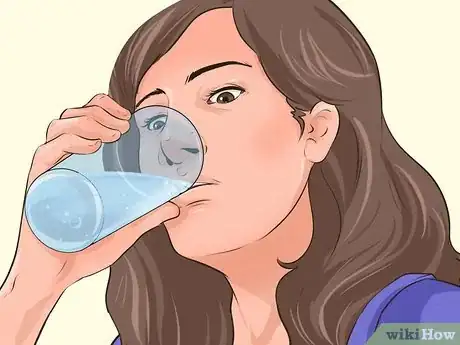
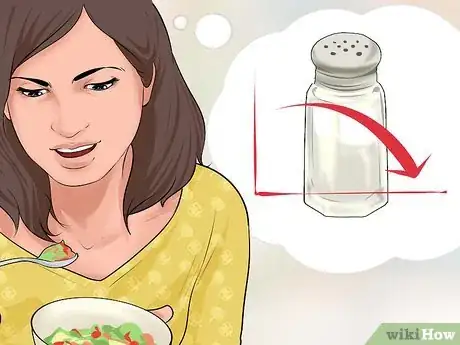
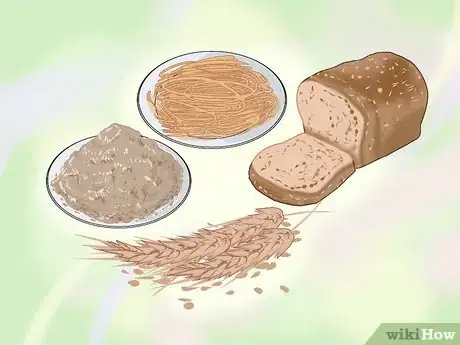
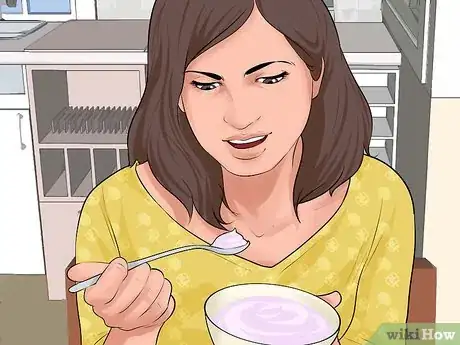
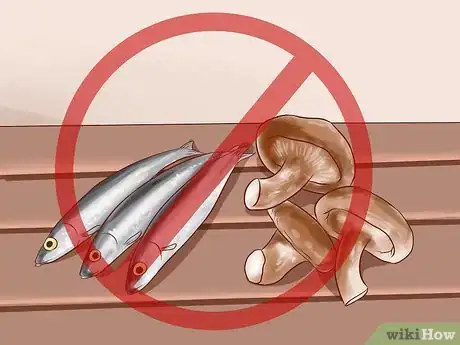
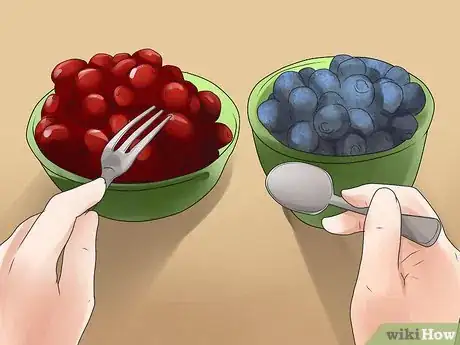


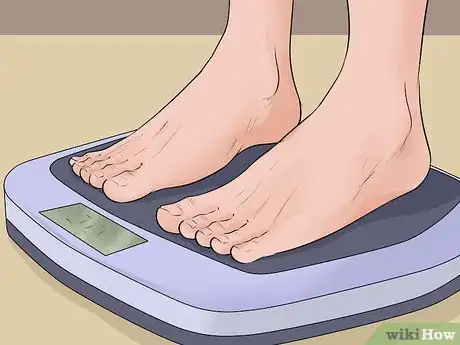

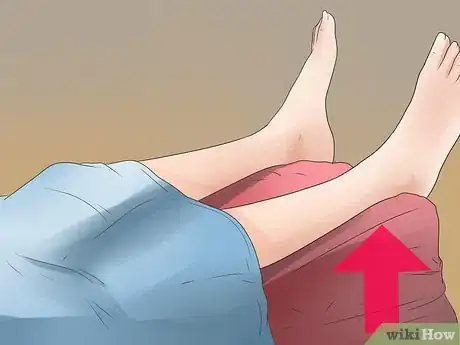
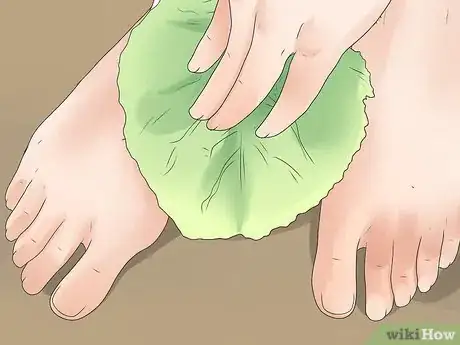


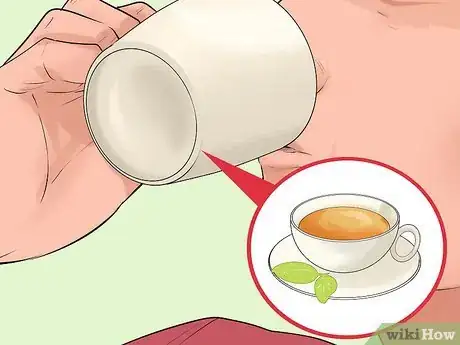



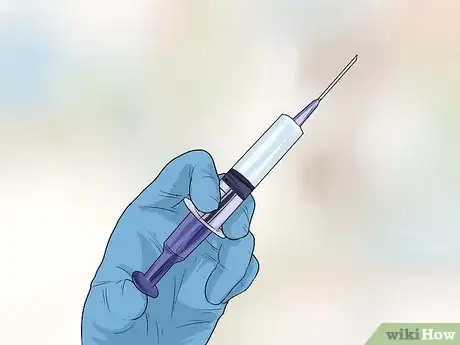
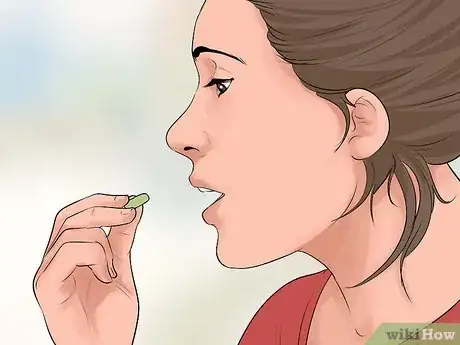

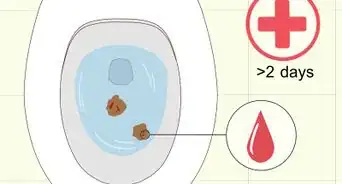


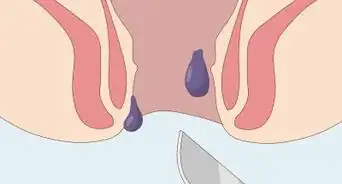



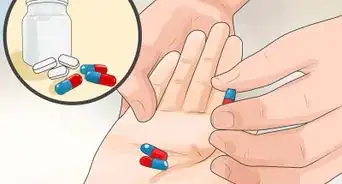




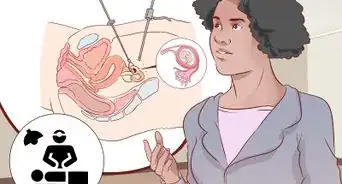








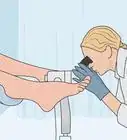
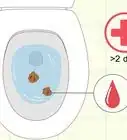





































Medical Disclaimer
The content of this article is not intended to be a substitute for professional medical advice, examination, diagnosis, or treatment. You should always contact your doctor or other qualified healthcare professional before starting, changing, or stopping any kind of health treatment.
Read More...